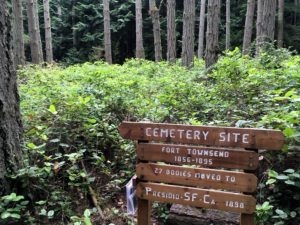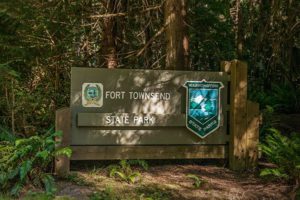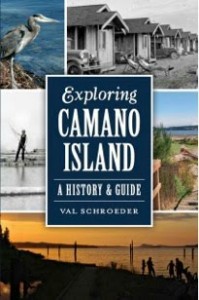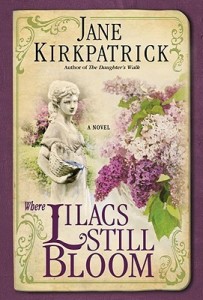On a recent camping trip to the Olympic Peninsula, we found a delightful new park. Well, not really new—Fort Townsend was originally build in 1856—but new to us. The fort operated as a U.S. Army site on and off until 1895. We enjoyed walking the grassy parade ground and reading the interpretive plaques lining the former Officers’ Row.
The park, located just six miles south of Port Townsend along Highway 20, occupies more than a third of the original Fort Townsend built by the U.S. Army for the protection of settlers. Timbers were hewn and laths cut from local forests. After an inspection by an army headquarters commander and deemed unfit, the fort was closed in 1859. Reopened in 1874, the fort thrived until1895 when fire destroyed the barracks. During World War II, the property was used as an enemy-munitions defusing station. Washington State Parks took custody of the premises in 1953.
 Several hiking trails meander through thick forests with soaring Douglas-firs, western hemlock, cedar trees and a rich understory of ferns. One of the trails passes an old cemetery site for soldiers who died while in service at the fort. In the late 1890s, the soldiers were reburied at the Presidio in San Francisco, California.
Several hiking trails meander through thick forests with soaring Douglas-firs, western hemlock, cedar trees and a rich understory of ferns. One of the trails passes an old cemetery site for soldiers who died while in service at the fort. In the late 1890s, the soldiers were reburied at the Presidio in San Francisco, California.
One of the park’s special features is 3,960 feet of saltwater shoreline on Port Townsend Bay.
Compared to many state parks, Fort Townsend is small with only 40 reservable standard campsites and four hiker/biker campsites. Although we didn’t have reservations, we were able to camp in a tranquil, private site.
Another attractive feature of the park, the Friends Barn, a replica of the Fort’s historic stable, is available for rent for weddings, reunions or other group activities. The charming hall has a fireplace and is located between the forest and the beach.
It’s always fun to find new places to camp right here in our own State of Washington, and we found Fort Townsend a lovely new destination.




